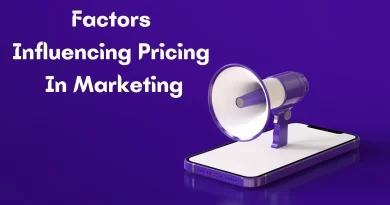Competitor Based Pricing Strategy [Examples, Benefits & Drawbacks!]
Competitor-based pricing can help companies stay competitive in the market and attract customers.
So stick around as we will get into the world of competitor-based pricing and explore how it can be used to make your business stand out.
What is Competitor Based Pricing?
Competitor-based pricing is a pricing strategy that involves setting prices based on the prices of similar products or services offered by competitors.
This approach can be used by businesses of all sizes and in any industry. The goal of competitor-based pricing is to ensure that a company’s products or services are priced competitively in the market.
Why Use Competitor Based Pricing?
There are several reasons why a company might choose to use competitor-based pricing. One of the main reasons is to stay competitive in the market.
By setting prices that are similar to those of competitors, a company can attract customers who might otherwise choose to buy from a competitor.
Further, competitor-based pricing can help a company gain market share by undercutting the prices of competitors.
Another reason to use competitor-based pricing is to avoid price wars. If a company sets prices that are significantly lower than those of competitors, other companies may respond by lowering their prices as well.
This can lead to a price war, where companies are forced to continuously lower their prices in order to stay competitive. By setting prices that are similar to those of competitors, a company can avoid this scenario.
How to Use Competitor Based Pricing?
There are several steps that a company can take to use competitor-based pricing effectively.
Research competitors
The first step in using competitor-based pricing is to research the prices of similar products or services offered by competitors. This can be done by visiting the websites of competitors, looking at their pricing lists, or contacting them directly.
Analyze the data
Once you have collected data on the prices of competitors, it’s important to analyze the data to identify patterns and trends. This can help you understand what prices are most common in the market, and what prices are seen as high or low.
Determine your target market
Before setting your prices, it’s crucial to determine your target market. This will help you understand what prices are most likely to be attractive to your target customers.
Set your prices
After analyzing the data and determining your target market, you can set your prices. It’s important to keep in mind that while you want to set prices that are competitive, you also want to make sure that your prices are high enough to cover your costs and generate a profit.
Monitor your competitors
After setting your prices, you need to monitor your competitors to ensure that your prices remain competitive. If a competitor lowers their prices, you may need to adjust your prices as well.
Examples of Competitor-Based Pricing
- A clothing store that sells similar clothing to a competitor at similar prices.
- A restaurant that offers a similar menu to a competitor at similar prices.
- A mobile phone company that offers similar plans to a competitor at similar prices.
Benefits of Competitor-Based Pricing
- Helps to stay competitive in the market.
- Gains market share by undercutting the prices of competitors.
- Avoid price wars.
- Helps to attract customers who might otherwise choose to buy from a competitor.
Drawbacks of Competitor-Based Pricing
- May lead to lower profit margins.
- May make it difficult to differentiate your company from competitors.
- Can limit pricing flexibility, as prices may need to be adjusted frequently in response to changes in competitor prices.
Another Example of competitor based pricing
Let’s take the example of a company that sells sports equipment. This company, let’s call it “Sporty’s,” sells a wide range of products such as basketballs, soccer balls, and tennis rackets. One of Sporty’s main competitors is a company called “Fit Gear.”
Sporty’s conducts research on Fit Gear’s pricing and finds that the average price for a basketball is $20. They also notice that Fit Gear runs sales and promotions frequently, offering a 10% discount on basketballs during certain times of the year.
Based on this information, Sporty’s decides to price their basketballs at $19.99 to be slightly cheaper than Fit Gear’s regular price, and also offer a similar 10% discount during the same times of the year as Fit Gear.
This pricing strategy helps Sporty’s to remain competitive in the market and attract customers who might otherwise choose to buy from Fit Gear.
Another example, let’s say that Sporty’s is a new startup and they’re introducing a new product, an inflatable kayak. They conduct market research and find out that the inflatable kayaks are being sold at $200 to $300 by their competitors.
Sporty’s prices their inflatable kayak at $250, which is slightly lower than the average price of their competitors, but still high enough to generate a profit for their business.
By using competitor-based pricing, Sporty’s is able to price their products in a way that is competitive in the market and helps them attract customers. They are also able to avoid price wars with their competitors while still maintaining a profit margin.
Ending Thoughts!
Competitor-based pricing is like playing a game of chess, you have to be strategic, take in all the data and keep an eye on the board (market) at all times, but if you play it right, you can come out on top and make a killing. Remember, in the end, it’s all about the Benjamins (money).
Make sure to read:




